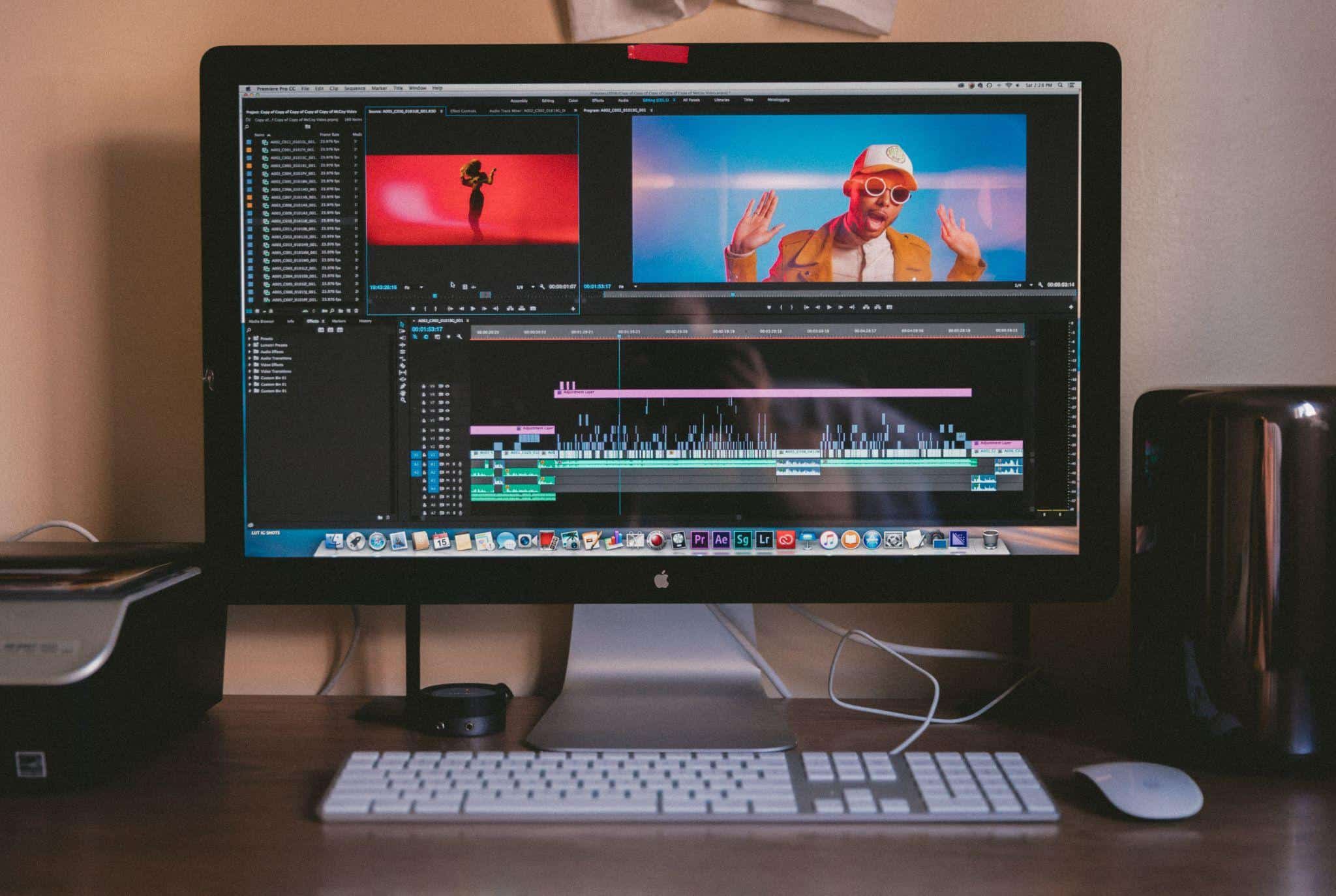Over the past few years, videos have become a fundamental component of the overall online landscape. With the rise of short-form videos on TikTok and Instagram in particular, more and more people are engaging with and consuming video content regularly.
As for businesses, videos have become an essential tool for marketing, promoting products and services, increasing brand visibility, and engaging with audiences.

© Unsplash
However, with such a large amount of video content now available online, it has become increasingly challenging to get videos seen by target audiences. This is where video optimization comes in: it refers to the process of optimizing your video content to increase its visibility, engagement, and overall impact.
Optimizing videos properly means ensuring they will reach the right people and get the engagement they deserve. You can increase your videos’ visibility by reading our hacks.
Get Your SEO Down Pat
Optimizing your videos to boost their visibility often comes down to mastering video SEO, or the use and placement of appropriate keywords, key phrases, tags, and hashtags.
The first step to effective video SEO is keyword research. Understanding what your target audience is searching for within your niche should determine your video optimization strategy, and help your video content show up in relevant search results.
Start with broad keywords related to your video content, and then use tools like Google AdWords Keyword Planner or SEMrush to generate more specific ones. Focus on long-tail keywords (phrases with three or more words), which you can discover through traditional research or specialized idea generators like Subscribr, as they tend to have less competition, making them easier to rank in search results. Then, consider using keywords in the form of questions that your target audience may be asking, such as “how to,” “what is,” or “why does.”
Once you have conducted your keyword research, it’s time to optimize your video title and description. Make sure to use your target keyword in the video title and try to keep the title under 60 characters so it doesn’t get truncated in search results. In addition, focus on making the title descriptive to accurately reflect the content of the video. It should be attention-grabbing, i.e., something that immediately entices viewers to click and watch.
In the video description, use the target keyword in the first sentence and include a brief summary of the video’s content. Make sure the description is detailed enough to provide viewers with relevant information, but not so long that it gets cut off in search results. A rule of thumb is to include links to your website or social media profiles in the video description as well.
Finally, video tags are another essential element of video SEO. Some general tips to help you use video tags to optimize your video content for search engines include the following:
- Use specific and relevant tags that accurately describe the content of your video.
- Include variations of your target keyword in the tags.
- Don’t overdo it with tags, as this can be considered spammy and can have the opposite effect of hurting your video’s ranking.
Pick the Appropriate Video Platform

© Unsplash
Choosing the right video platform to post your content on is an important decision that can affect the visibility and success of your video marketing campaigns. With so many video hosting platforms available today, it can be challenging to know which one to choose for your specific business.
One of the first things to consider is your audience. Before choosing any one platform to focus on, think about who your brand’s target audience is and where they are most likely to be viewing videos that belong to your niche. For example, if your audience is primarily on social media, you will want to focus on platforms like TikTok or Instagram, whereas if you’re targeting a professional audience, LinkedIn and Vimeo may be better choices.
Analytics is another crucial consideration when selecting a video platform. Look for a platform that offers detailed analytics for business accounts, including views, engagement, click-through rates for ads, and viewer retention. This kind of information can help you identify what’s working and what’s not in terms of the video content you’re producing, so you can make adjustments to improve your results when and if necessary.
Finally, even if you opt for one particular streaming platform to host your videos on, e.g. Vimeo, promoting your videos across different channels is key to maximizing their reach, visibility, and impact. Therefore, make sure to share your videos on social media, embed them on your website and landing pages, and include them in your email marketing efforts.
Add Closed Captions and Transcriptions
Closed captions and transcriptions used to be considered optional features for videos posted on the internet. Today, they are essential components necessary for effective video optimization. These tools offer many benefits that help make video content more accessible, engaging, and visible to a wider audience.
This goes without saying, but closed captions and transcriptions are there to improve accessibility to viewers who are deaf or hard of hearing. Adding them to all your videos ensures everyone can enjoy and benefit from your content, regardless of their hearing ability, and it also demonstrates your brand’s commitment to catering to diverse audiences.
Incorporating these simple text files into videos can also help improve your videos’ SEO, as Google and similar search engines rely on text to better understand what a video is about. More than that, search engines will take note of whether your content has been optimized for accessibility. This is why including captions and transcriptions in your video content can lead to higher search rankings.
Transcribing your videos also contributes to increasing user engagement, especially for longer or more complex videos, where viewers may struggle to keep up with the content without the accompanying captions.
Many prominent video platforms have their own built-in tools that you can use to add transcripts to videos. Some of them integrate AI-powered technology to generate automatic subtitles based on what can be discerned from the audio, but this technology is still not perfect. It is best to proofread any AI-generated text before publishing any videos using this functionality.
Encourage Comments and Discussions

© Unsplash
Encouraging users to engage with your videos by leaving comments can do wonders for boosting video visibility on practically any video-hosting platform. This is because engagement metrics like comments, likes, and shares are taken into account by algorithms when crawling video platforms and determining video visibility to users. In other words, the more engagement a video receives, the more likely it is to be recommended to other users and appear in their feeds.
Apart from boosting visibility through active user engagement, comments and replies can also provide valuable feedback and insights to your marketing team. By monitoring and responding to comments, you can better understand your audience’s interests and preferences, as well as identify areas for improvement in your current video content. This can vastly help you grow your YouTube channel (or whichever platform you’re using).
It’s also important to consider innovative strategies to enhance your presence. One such approach is the judicious use of services to buy YouTube views, a tactic that some brands use to kickstart engagement on their content. This strategy, when used ethically and in combination with high-quality, relevant content, can help to boost the initial visibility of your videos. It’s not about creating an illusion of popularity, but rather about giving your content a chance to be seen and shared, thereby organically growing your audience.
One of the most effective ways to encourage comments and discussions under videos is to actively engage with viewers by responding to their comments and questions. This not only gives your brand image a more authentic touch, as users nowadays expect to interact with brands on their social media, but it also encourages others to join in the conversation and share their own thoughts and opinions.
Another strategy is to ask open-ended questions or prompt viewers to share their experiences or insights related to the video’s topic. This can be done through the video itself, as well as in the video description or in the comment section. A clear prompt at the end of your video content, e.g. after a series of video stories, is effective at inviting viewers to participate in the conversation — think along the lines of “Have you ever had this experience before? Comment below and let us know.”
Use an Appealing Thumbnail
By now, everybody knows that a video thumbnail is a small image that viewers see before deciding whether to watch a video. Much like headings in text-based content, the thumbnail can be the deciding factor between convincing someone to watch your content or not, making it another important aspect of optimizing videos for visibility purposes.
Your thumbnail should be a self-explanatory snapshot of your video’s premise. It should capture the main selling point of your video and be a clear picture with little to no ambiguity. For example, a video recipe would feature a bright photo of the dish being made; a travel video talking about the top 10 trending vacation spots would use a crisp photo of one of the beautiful locations mentioned in the video.
If you want to include text in the thumbnail, make sure it complements the video’s title and isn’t a disconnected piece of information. In addition, the font and style of the text used in your thumbnails should always match the rest of your videos, so that the appearance of your feed remains professional-looking and consistent.
Of course, you should test different thumbnail options to see what works best for your type of video content. Use analytics tools to track which thumbnails generate the most clicks and engagement, and adjust accordingly.
Timing is Everything

© Unsplash
Deciding when to post videos and doing it at just the right time has a huge impact on improving video visibility. It can also significantly impact the number of views over time, rate of engagement, and consequently the overall success of your video content.
Timing the publishing of your videos can help maximize your audience reach, as it increases the chances of your video being seen by as much of your target audience as possible. However, for this to work, you will need to do a lot of prior testing to glean when your target viewers are most active on the platform you’re using.
When performing these tests, think about the specific time zone or region you wish to target, and then try several publishing times to understand when your videos get the most views within the first hour or so. Effectively taking advantage of when your audience is most likely to be online leads to increasing the potential of your video being seen right off the bat.
Moreover, posting videos at the right time can help you compete with other, similar brands and content creators. New content is constantly being uploaded to the internet, and if you post your videos at random times during the day, they will get buried under a sea of others that got posted during an appropriate time.
Finally, timing the publishing of your videos can impact how social media algorithms rank and promote your content. Platforms like YouTube, Facebook, and Instagram use complex algorithms to determine which content to push to their users’ feeds. Doing your research and understanding how specific platforms’ algorithms work can help you decide on the right timing to post, increasing the likelihood of your video being ranked higher in these algorithms, and resulting in more views and engagement.
Final Thoughts on Video Optimization
Ultimately, video optimization for the sake of boosting visibility can be a challenging task for marketing teams and independent video creators alike. The general oversaturation of content online, combined with search engines often working against you, makes it a challenge.
Therefore, the tips we’ve outlined above can make this process much easier, and you should see an uptick in views and engagement shortly after you begin implementing them.
However, it is important to remember that video optimization is an ongoing process, and that you should continually analyze your videos’ metrics and adjust your video marketing strategy accordingly.
All in all, by implementing some or all of the above hacks, you should maximize your videos’ visibility, reach a wider audience, and ultimately see greater success on various video platforms.

